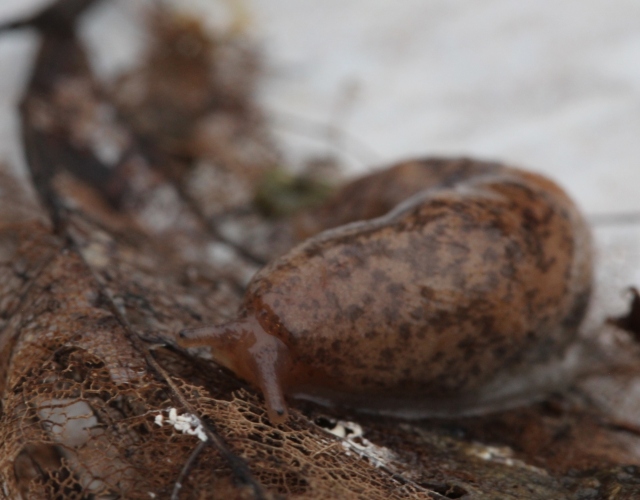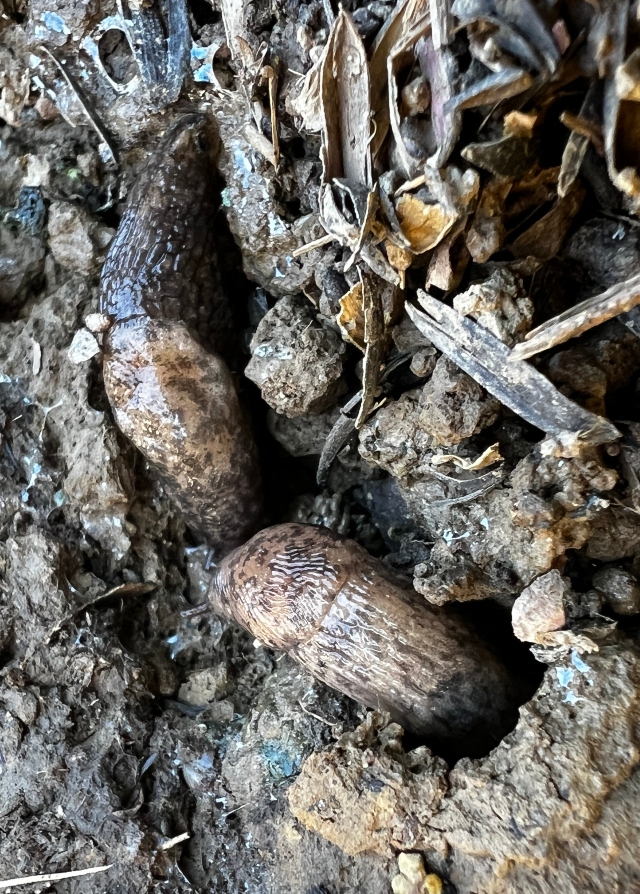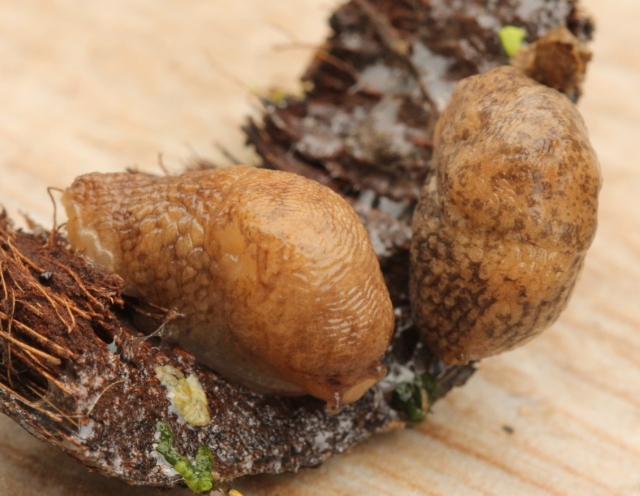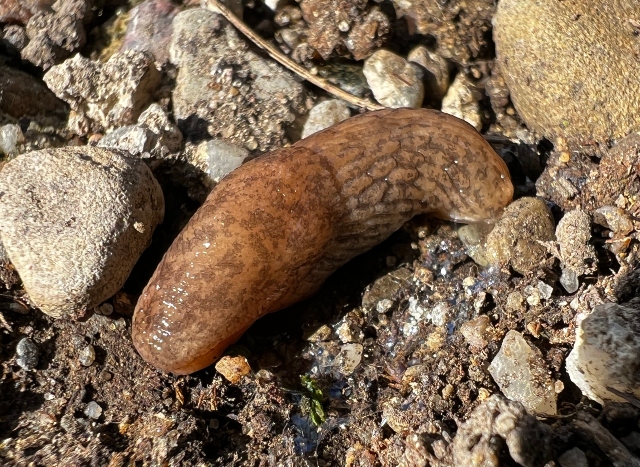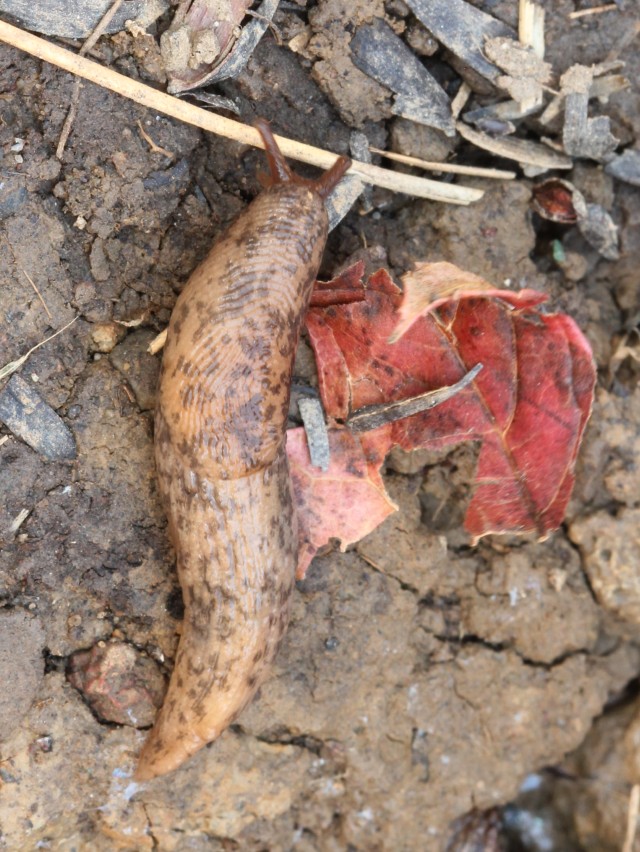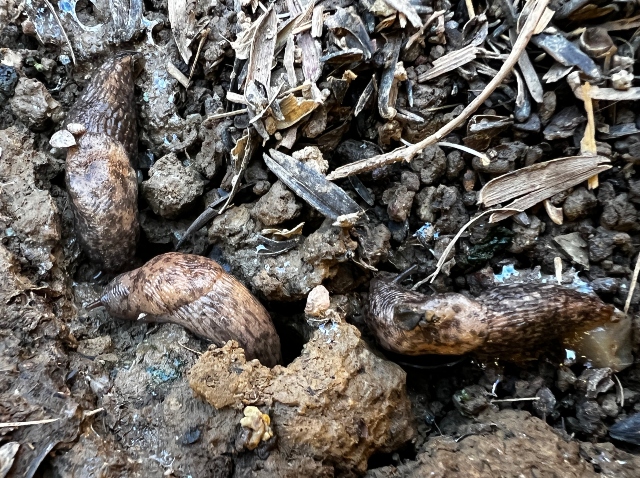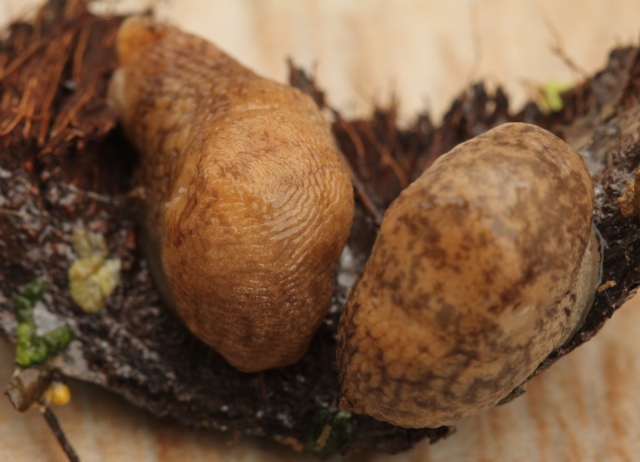I often find these creatures around the edges of my garden on rainy Winter days. They are most often under rocks, logs or tarps. I suspect that they get flooded out of their burrows and surface for a bit before going back underground.
This species is almost exclusively restricted to cultivated areas, usually in open habitats, meadows, near roadsides, in ruins, gardens and parks – but it is not found in forests.
Also known as the Grey Field Slug or Grey Garden Slug, it is native to northern Europe, North Africa, and the Atlantic Islands. It was introduced into North America and now occurs across the continent. It is most common in southern Canada and the northern United States.
Like many of its relatives, the Milky Slug is active at night. During the day it remains concealed in the ground. It does not burrow, but uses existing crevices and worm holes. After dark, it climbs onto vegetation to feed.
It is wide-ranging in its diet, consuming beans, celery, corn, broccoli, cabbage, cauliflower, kale, radish, turnips, pumpkin, squash, lettuce, peas, spinach, and more.
When at rest, its body is contracted and the tentacles are retracted. When disturbed, it exudes white mucus over its entire body, leading to its common name.
Slugs are hermaphrodites; every slug is born with both male and female reproductive parts and any slug is capable of laying eggs; self-fertilization can also occur.

